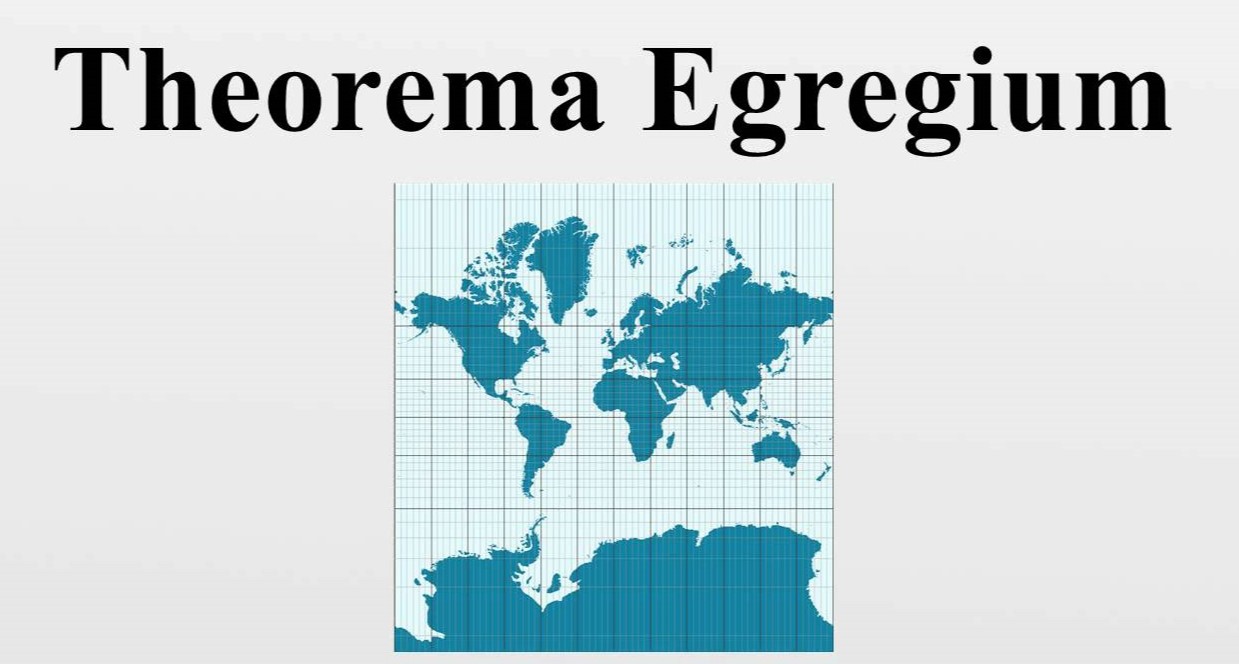
Gauss's Theorema Egregium, a remarkable theorem in differential geometry, unveils profound insights into the intrinsic curvature of surfaces. Named after the eminent mathematician Carl Friedrich Gauss, this theorem has left an indelible mark on the field of mathematics. By delving into the essence of surfaces and their curvature, Gauss's Theorema Egregium offers a captivating journey into the intricate interplay between geometry and differential calculus.
In this article, we will unravel six fascinating facts about Gauss's Theorema Egregium, shedding light on its significance and implications. From its historical origins to its profound impact on modern mathematics, each fact will illuminate a different facet of this extraordinary theorem. Join us as we embark on a captivating exploration of Gauss's Theorema Egregium, delving into its intricacies and unveiling the profound beauty of mathematical discovery.
Key Takeaways:
- Gauss’s Theorema Egregium is a groundbreaking theorem in math that helps measure curved surfaces without needing to consider the space around them. It’s super important in fields like cartography and engineering!
- This theorem by Carl Friedrich Gauss revolutionized the study of curved surfaces and is a key concept in cartography. It’s a big deal in modern science and engineering, shaping how we understand and work with curved surfaces.
Gauss's Theorema Egregium is a Remarkable Discovery
Gauss's Theorema Egregium, which translates to "remarkable theorem" in Latin, is a fundamental concept in differential geometry. This theorem, formulated by the brilliant mathematician Carl Friedrich Gauss, holds significant importance in the field of mathematics and has far-reaching implications in various scientific disciplines.
It's a Fundamental Theorem in Differential Geometry
Gauss's Theorema Egregium is a fundamental theorem in the field of differential geometry. It states that the Gaussian curvature of a surface can be determined entirely from measurements within the surface itself, without any reference to the surrounding space. This remarkable property makes it a cornerstone of modern geometry and has profound implications in fields such as cartography, physics, and engineering.
It Revolutionized the Study of Curved Surfaces
Gauss's Theorema Egregium revolutionized the study of curved surfaces by providing a means to measure intrinsic curvature. Prior to this groundbreaking theorem, mathematicians and scientists struggled to quantify the curvature of surfaces without considering their embedding in higher-dimensional spaces. Gauss's discovery paved the way for a deeper understanding of the geometry of surfaces and opened new avenues for research in mathematics and physics.
It's a Cornerstone of Differential Geometry
Gauss's Theorema Egregium is considered a cornerstone of differential geometry, a branch of mathematics that deals with the study of curves and surfaces using the techniques of calculus and linear algebra. This theorem plays a pivotal role in the development of modern geometry and has applications in diverse fields, including computer graphics, geology, and architecture.
It's a Key Concept in Cartography
Gauss's Theorema Egregium is a key concept in cartography, the science and art of mapmaking. By enabling the accurate representation of curved surfaces on flat maps, this theorem has revolutionized the way geographic information is visualized and analyzed. Its impact on cartography has been profound, influencing the design of world maps and navigation systems.
It's a Pillar of Modern Science and Engineering
Gauss's Theorema Egregium stands as a pillar of modern science and engineering, providing essential tools for understanding and manipulating curved surfaces in various applications. From designing complex architectural structures to simulating natural phenomena in computer graphics, the principles derived from this theorem continue to shape the advancement of science and technology.
Gauss's Theorema Egregium, a remarkable theorem indeed, continues to inspire mathematicians, scientists, and engineers, leaving an indelible mark on the landscape of modern mathematics and its applications.
Conclusion
In conclusion, Gauss's Theorema Egregium stands as a remarkable testament to the profound interplay between geometry and differential calculus. Its revelation that the curvature of a surface can be determined intrinsically, without reference to the space in which it is embedded, has revolutionized the field of differential geometry. The concept's enduring significance is evident in its applications across diverse disciplines, from physics and engineering to computer graphics and architecture. By understanding the intrinsic geometry of surfaces, we gain invaluable insights into the fundamental nature of space and the universe. Gauss's Theorema Egregium continues to inspire and challenge mathematicians and scientists, serving as a timeless beacon of intellectual curiosity and mathematical beauty.
FAQs
What is Gauss's Theorema Egregium?Gauss's Theorema Egregium, translated as "Remarkable Theorem," is a fundamental result in differential geometry discovered by Carl Friedrich Gauss. It states that the Gaussian curvature of a surface can be determined solely from measurements made within the surface, without any reference to the space in which the surface is embedded.
How does Gauss's Theorema Egregium impact modern science and technology?Gauss's Theorema Egregium has far-reaching implications in various fields. Its intrinsic approach to measuring curvature has found applications in physics, engineering, computer graphics, and architecture. Understanding the intrinsic geometry of surfaces has enabled advancements in fields such as material science, robotics, and even the design of efficient transportation networks.
Was this page helpful?
Our commitment to delivering trustworthy and engaging content is at the heart of what we do. Each fact on our site is contributed by real users like you, bringing a wealth of diverse insights and information. To ensure the highest standards of accuracy and reliability, our dedicated editors meticulously review each submission. This process guarantees that the facts we share are not only fascinating but also credible. Trust in our commitment to quality and authenticity as you explore and learn with us.


